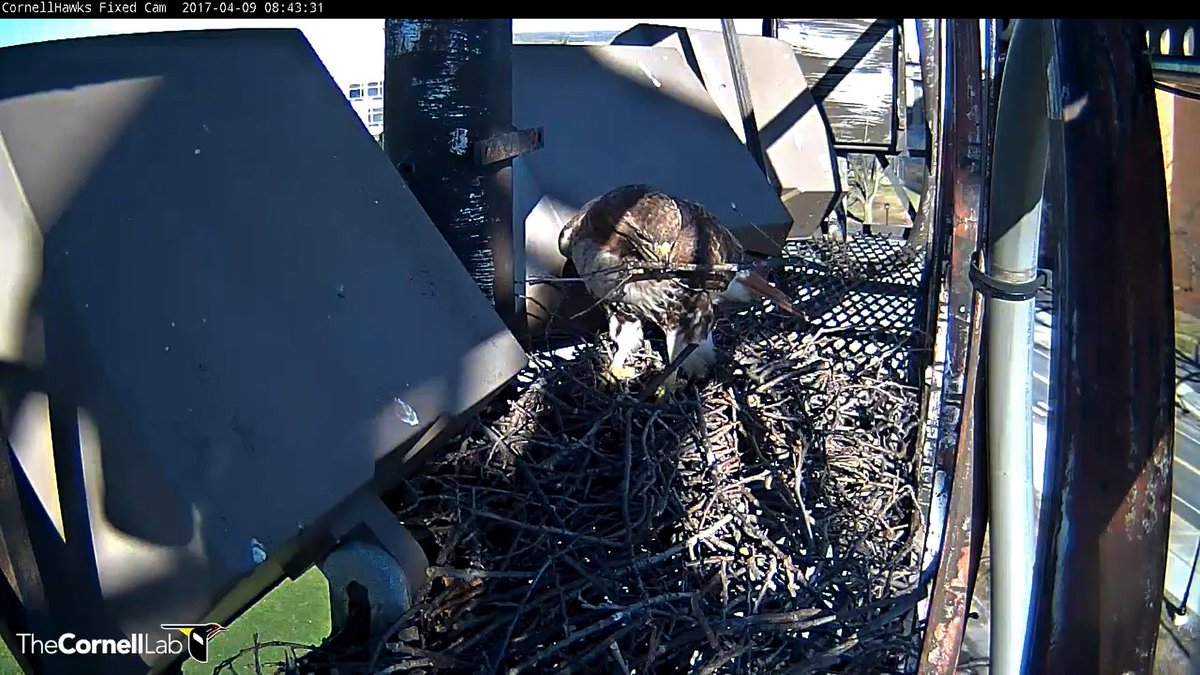The weather is driven by the movement and transfer of energy, embodied in the form of low pressure systems. There, warm air surges northward with the warm front ahead the storm and cold air dives south behind it to be warmed again. At this time of the year, the warm is slowly winning the seasonal battle, driving further and further north. Yes, the cold fights back but any gain is soon lost. That's not to say it doesn't put up a fight. On Tuesday, we were able to witness the transition in action in the form of dense fog.
Around noon,
very dense fog suddenly developed, shrouding the campus in a ghostly
mist. Warm air can hold more water vapor than cold air. This warm air
cooled as it contacted the cooler air at the surface since cold air is dense
and therefore hard to dislodge. When the air cannot hold any more water
vapor, it condenses into liquid, and suddenly the water is visible. This
process generally happens high in the atmosphere, forming clouds. Fog
is basically a ground level cloud. Normally, air cools as one increases in altitude. In the case of fog temperatures near the surface are cooler than the upper levels. This is called an inversion. This often happens in valleys where the mountains physically prevent warm winds from mixing the cold air out. This results in the weird thing where one can stand on the summit of a mountain in the sun but meanwhile the valley below is cool and foggy. This could have been the case since we are located on the slope of an ancient glacial valley. In this case, another explanation could be that a cold front was
pressing in from the North, feeding cold, dry air, which was being channeled down the valley. This dry air eventually caused
the fog to dissipate (evaporate). While the cold won out this time, its victory
won't last long. Eventually the warmth will win out.







